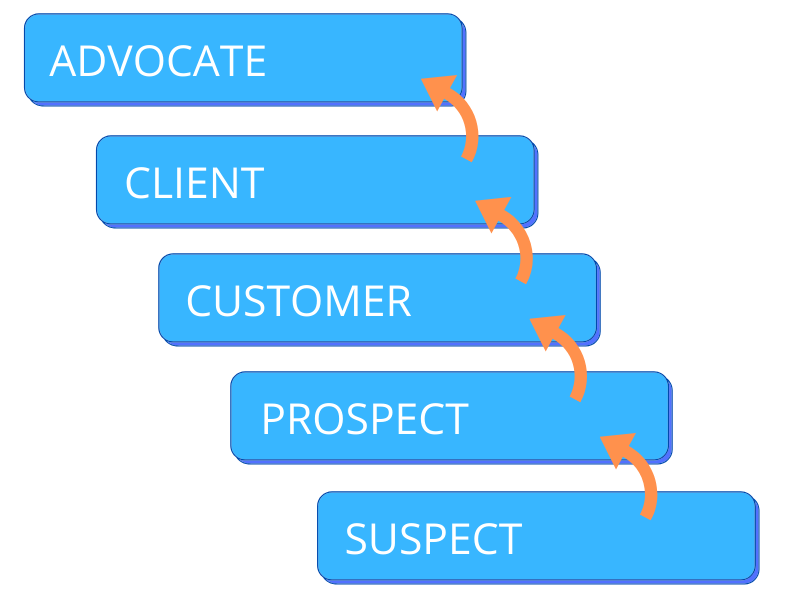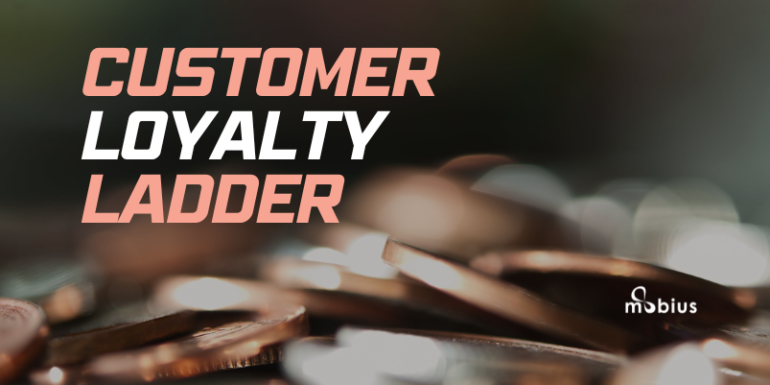Did you know acing your brand loyalty is just five steps away? It is easier now than ever with the concept of a customer loyalty ladder. Before we jump into the process, let’s understand the basics. A relationship marketer’s role is to ‘assist’ clients in climbing the corporate ladder as far as feasible. This typically entails offering more individualized service and exceeding expectations with service excellence at every turn.
According to conventional thinking, a company can foster customer loyalty by continuously going beyond its expectations. With each positive experience, a customer’s excitement for a business increases until it reaches a peak level of support. At this point, the consumer transforms into a brand spokesman and aids in expanding the firm through promotion and word-of-mouth.
What is the customer loyalty ladder?
We must first understand what the concept performs to comprehend its benefits. The customer loyalty ladder is a relationship marketing concept in which customers steadily advance through relationship tiers, beginning at the bottom as ‘suspects’ and finishing at the top as ‘advocates.’ It enables brands to optimize relationship marketing, organize clients with different points of contact, and engage them in a relevant way.
Depending on how people connect with a brand, they are assigned to one of the five rungs. Generally speaking, the loyalty ladder looks like this:

Five rungs of the customer loyalty ladder
First rung: Suspects
The first type is the suspects. They are an organization’s potential customers. Although they might know about the organization’s marketing initiatives, they don’t do business with them now. For instance, a company that is content with its current cab service but is aware of all the affordable automobile possibilities is a suspect for the business.
Second rung: Potentials
Potentials are the ones who have been influenced by the company’s advertising and are thoughtfully considering purchasing the company’s products or services. The company needs to show why they must make the purchase and address all their questions. A good example would be a company that wants to purchase software and adds five specific models to its list of potential purchases. As it typically purchases one of these five options, this company becomes a prospect for all five companies.
Third rung: Customers
Customers are those who recently purchased the company’s products or services for the first time and are now utilizing them. The company must offer them all available post-sale support to allay their worries. A loyalty program or a discount for loyal consumers can entice these clients—for instance, a customer who buys something, such as a car or a smartphone, can be given customized offers on their next purchase.
Fourth rung: Clients
Clients are the ones who frequently transact with the company and are eager to maintain this relationship in the future. Their brand loyalty may help businesses grow if they are well-engaged. These may develop into important clients too. Hence, the relationship must be strengthened with them to make them advocates for your business.
Fifth rung: Advocates
Finally, advocates hold the most loyal relationship and suggest a company to their connections in addition to conducting repeat business with the company. Since they are the most valuable players, the company must give them royal treatment and top priority. For instance, when a company purchases logistics from a business, it may be satisfied that it tells others about it, indirectly promoting it.
Understanding the customer loyalty ladder and customer buying journey
It is known that the same distinctive characteristics and conditions are shared by all clients in the same groupings. Traits refer to situational states of mind and the conditions that resulted in that mind frame in the first place. The various stages of the client buying process, such as awareness, consideration, purchase, retention, and advocacy, are generally similar to this. However, they don’t fully explore the feelings of the client. Hence, here’s a better insight towards understanding the journey better using the five rungs of the loyalty ladder:
1. Leads who have reached the awareness stage are looking for a fix after becoming more aware of an issue.
2. Prospects still in the consideration stage become more determined to find the best answer to their problem despite their trepidation.
3. Customers about to purchase are interested in learning which solution would best solve their issue and need to feel secure in their decision.
4. Clients that are consistently delighted increase their faith in your business and are firmly in the retention stage.
5. Advocates are encouraged to stick by your brand and recommend it to others.
How can you benefit from this concept?
Customers become brand ambassadors when they climb the advocacy ladder for your business, free advertising for you. This is the case of an extremely successful one at doing this! In any case, recommendations from people they know are considered the most trustworthy form of advertising by 92% of consumers.
Naturally, the benefits of cultivating client loyalty include lower acquisition costs, improved brand growth, and increased retention. The goal is to improve client lifetime value at any cost while simultaneously offering a level of customer service experience with the caliber of your offering.
However, you can only recognize, value, and reward client loyalty with the greatest possible impact by being properly educated. Thus, a loyalty ladder assists you in accomplishing that, which is why it could benefit your company.






